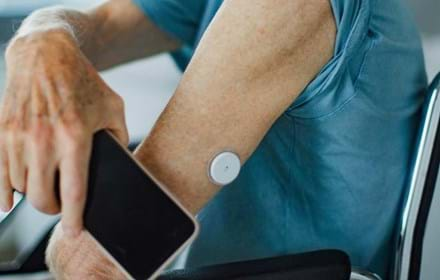
The sugar story - what's changed?
We all know that, whether you have diabetes or not, eating too many sugar-rich foods and drinks is not recommended for good overall health. Recently, there has been more emphasis on sugar and how it affects risks of obesity, dental decay, and even type 2 diabetes.
Azmina Govindji, RD MBDA Registered Dietitian and Nutritionist and member of the DRWF Editorial Advisory Board summarises the key recommendations from the recent government report on sugar and carbohydrates, and offer practical tips on how to enjoy small amounts of sugar-containing foods as part of an overall healthy eating plan.
The SACN Sugar and Carbohydrates Report
On 17th July 2015, the Government's Scientific Advisory Committee on Nutrition (SACN) published an extensive review of the science on carbohydrate and made recommendations on how people should improve their diets so as to have a better balance of carbohydrate foods, especially sugar.
Here are some key messages from that report:
1. We are advised to drastically reduce our intake of what are called "free sugars," by cutting total energy intake in half from 10% to 5% - e.g. cutting recommendations from 12-16 teaspoons per day in adult men and women to 6-8 teaspoons per day.
2. This refers to sugar that is physically added to food by you at home or by manufacturers of food products, as well as sugars that are naturally present in honey, syrups and unsweetened fruit juices. Free sugars should count for no more than 5% of our daily energy (calorie) intake. We're currently having about 12% of our calories from sugars (teenagers have about 15%).
3. We need to eat more fibre. The target to aim for is 30g a day; currently we're eating about 18g.
4. The amount of carbs we eat in a day should remain the same as previous recommendations - 50% of our daily calories should come from starchy carbs, with particular emphasis on whole grains.

Replace sugar in your diet by eating more foods that are high in fibre - it is recommended to aim for 30g a day. High fibre foods include brown pasta
Why so much emphasis on sugar?
The review of the research by SACN showed that having too much sugar puts you at greater risk of tooth decay, and that there is an association between a high intake of sugars and a higher calorie intake, which increases risks of obesity. Sugar sweetened beverages (sugar-rich drinks) in particular were shown to increase body mass index (BMI) in teenagers - this age group tends to drink the highest volume of sugar sweetened beverages.
There is also some research that suggests that having too many sugar sweetened beverages increases the risk of type 2 diabetes.
Helping to make sense of sugars
When you look at the National Diet and Nutrition Surveys (NDNS) that are carried out in the UK, you notice that we appear to be eating more free sugars and less fibre than the original targets before the SACN Report – they were 10% energy from sugars and 24g fibre in a day. So, achieving the stricter targets will be a significant challenge.
What you need to remember is that these are targets for the population, and each person can make gradual changes towards these goals.
How do you know when sugar has been added?
Of course seeing sugar on a food label is a dead giveaway, but note that sugar comes in different guises – it may be called dextrose, glucose, maltose, treacle, syrups, molasses, demerara, and other names.
Sugars that are naturally present in milk (lactose) and fruit (fructose) are not free sugars. Currently, there is no way of telling how much free sugars there are in a food, as labels only tell you the "total sugars". So, when you look at a label of a yogurt for example, some of it will be free (added) and some will be lactose (milk sugar). Try to consider the whole food - does the food give you some goodness? In the case of a yogurt, it certainly gives you protein and calcium. And there are low fat, lower sugar types available that help you cut free sugars, saturated fat and calories.
Does this mean saying goodbye to fruit juice?
Although fruit juice is a source of free sugars, it is a valuable provider of micronutrients like potassium, vitamin C and folate. A 150ml glass is counted once a day as one of the daily recommended” five a day" fruit and vegetables. It's best to have this with a meal, so you can help to slow down the rise in blood glucose (sugar) and the effect on your teeth.

A glass of fruit juice is counted once a day as one of your recommended "five a day" fruit and vegetables, although you should aim to drink no more than 150ml per glass
Smoothies
When it comes to smoothies, the juice part is free sugars; the rest is pulped fruit. A 250ml serving of a smoothie counts as two of your five a day, so long as it contains 80g fruit and/or veg plus 150ml fruit juice. Smoothies are made up of a mixture of fruits, so they give you a wider range of nutrients, and are also a source of fibre. Check the label for sugar content and watch your portion size.
What about cola?
When it comes to sugar-containing soft drinks, people with diabetes are advised to swap regular versions for diet drinks - this advice is still the same. They are sugar free and calorie free and should not affect your blood glucose levels.
Three top tips
1. High sugar foods can be high in calories and can cause sharp rises in blood glucose levels, especially when eaten on their own. Often sugary foods and snacks are also high in fat too. So, as always, cut down on these foods.
2. Swap sugar sweetened beverages for diet versions and read labels for added sugars.
3. Eat more high fibre foods like brown pasta, brown rice, whole grain cereals, fruit, vegetables, and pulses.
More information
Scientific Advisory Committee on Nutrition Carbohydrates and Health report: here
Public Health England and Food Standards Agency National Diet and Nutrition Survey: here
NHS Choices What counts towards five a day?: here
NHS BMI (body mass index) healthy weight calculator): here
I would like to make a regular donation of
I would like to make a single donation of
There are lots of ways to raise money to support
people living with all forms of diabetes.
Bake, Swim, Cycle, Fly ... Do It For DRWF!
Fundraise with us
Recent News


